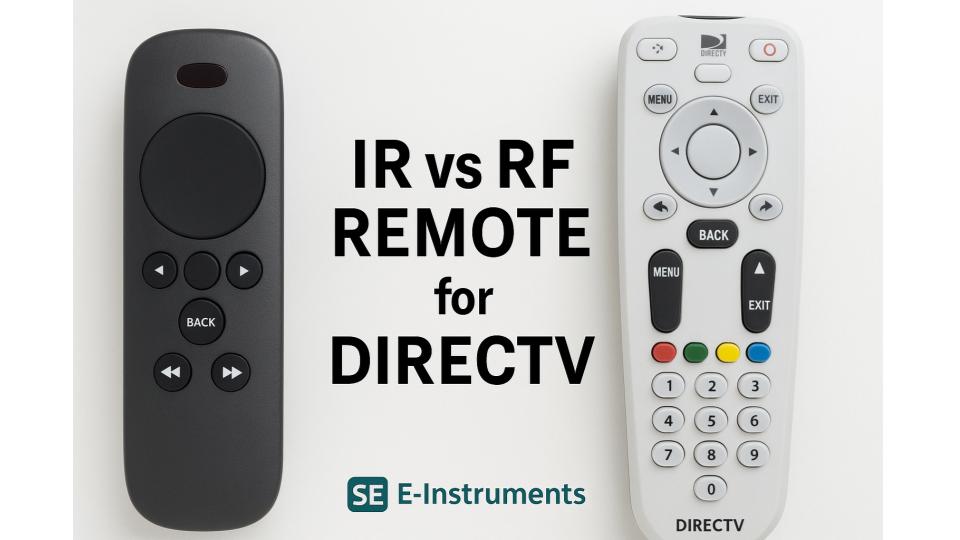If you’re a DirecTV user, you may have noticed that some remotes use IR (infrared) while others use RF (radio frequency). While both allow you to control your DirecTV receiver, they work in very different ways. Understanding the difference can help you choose the right remote for your setup.
Table of Contents
🔍 What is an IR Remote?
IR stands for infrared, which is the most common type of remote control technology. It works by sending an invisible beam of light from the remote to the receiver.
How it works with DirecTV:
- The remote must be pointed directly at the DirecTV box.
- It requires line of sight, meaning any obstruction (like furniture or walls) can block the signal.
- Range is typically around 15–30 feet.
Pros of IR:
- Widely compatible and inexpensive.
- Works with universal remotes and many TV brands.
- Simple and reliable for single-room setups.
Cons of IR:
- Requires line of sight.
- Limited range compared to RF.
- Less convenient in large rooms or multi-room setups.
⚡ What is an RF Remote?
RF stands for radio frequency, and it works differently than IR. Instead of a beam of light, RF remotes send radio signals to the receiver.
How it works with DirecTV:
- No line of sight required—signals can go through walls, furniture, and cabinets.
- You can control the DirecTV box from another room.
- Some RF remotes also use Bluetooth for improved connectivity.
Pros of RF:
- Works without pointing directly at the box.
- Longer range (up to 50–100 feet depending on the model).
- Ideal for hidden receivers or multi-room setups.
Cons of RF:
- More expensive than IR remotes.
- Not all DirecTV receivers support RF mode.
- Requires pairing setup to work correctly.
📊 Side-by-Side Comparison
| Feature | IR Remote | RF Remote |
|---|---|---|
| Technology | Infrared light beam | Radio frequency signals |
| Line of Sight | ✅ Required | ❌ Not required |
| Range | ~15–30 feet | 50–100 feet (through walls) |
| Cost | Lower | Higher |
| Setup | Plug-and-play | Requires pairing |
| Best Use Case | Single room, open setup | Multi-room, hidden receivers |
🏆 Which One Should You Choose?
- Choose an IR remote if you have a basic setup in one room and want a simple, low-cost solution.
- Choose an RF remote if you want the convenience of controlling your DirecTV box without pointing directly at it, or if your receiver is hidden away or located in another room.
👉 In short: IR is simple and cheap, RF is powerful and flexible.

